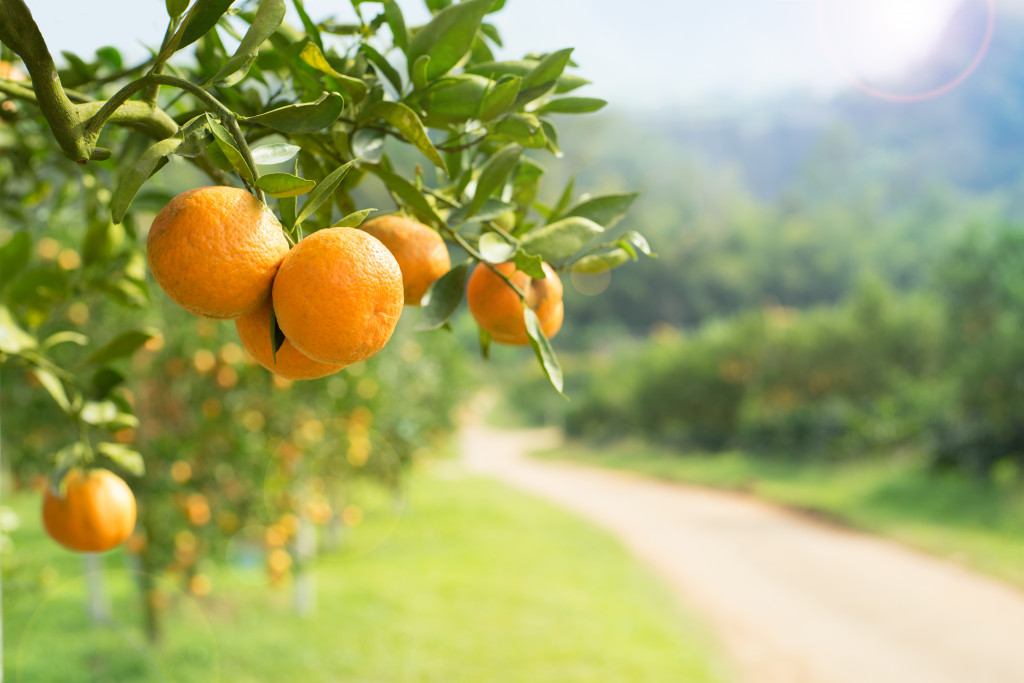If you’re looking for a way to enjoy fresh produce and new flavors, as well as a way to start growing your own food, starting a fruit garden is an excellent idea. However, before you can start harvesting your first homegrown strawberries, some steps need to be taken.
Check out these nine steps to get started with growing a fruit garden.

Find the right spot for your garden
There are a few things to keep in mind when finding the right spot for your fruit garden. For example, you’ll want to make sure that the spot gets plenty of sun exposure and that it’s well-drained. If you’re not sure where to start, take a look at your yard and try to find a spot that meets these requirements and is also easily accessible.
Make sure the site has room for all the plants
The area you must select should have room for the fruit trees and plants you’re planning. This includes considering things like tree size, how many trees are being planted, the distance between the trees, and the type of soil on which they will be planted. With this in mind, take some time before choosing the site so that you can visualize where everything will go on your property.
Amend the soil with compost or organic matter
Adding compost to the soil is a great way to improve its quality and fertility. When you add compost to the soil, it helps retain moisture, reduces erosion, and provides nutrients to the plants. You can either buy compost from a store or make your own from organic materials like leaves, grass clippings, food scraps, and tree bark.
To add compost to the soil:
- Start by digging a hole that is big enough to fit the entire container of compost.
- Loosen up the soil in the hole with a shovel and add the compost.
- Mix the compost in with the ground until it’s well incorporated, and then pack down the soil so that it’s firm.
Repeat the process until the entire area has been worked. Don’t forget to add mulch to help reduce water loss and weed growth as well.
Choose fruit varieties that are suited to your climate
When selecting fruit tree varieties for your garden, choosing those suited to your climate is essential. For example, if you live in a warm climate, you’ll want to pick fruit tree varieties that are suited for warm weather. The same is true if you live in a cold climate—choose tree varieties suited for cold weather.
In addition to choosing the right tree variety for your climate, it’s also important to choose the right tree variety for your soil type. For example, if your soil is heavy and clay-based, you’ll want to pick fruit tree varieties that are tolerant of those conditions.
Learn the growing requirements for your chosen fruit varieties
You also need to learn the growing requirements for your selected fruit tree varieties. This includes things like how much sun they need, how much water they need, and the type of soil they prefer. For example, an apple tree needs eight to ten hours of direct sun exposure per day and requires about one inch of water per week.
If you’re not sure about the proper procedures or what your plants need, you can contact a tree care specialist who can provide insight into what trees you can grow and how to care for them.
Make an irrigation system for your garden
Irrigation is an essential part of growing fruit plants. Without a proper irrigation system, your plants won’t get the water they need to thrive. You need to consider a few things when setting up your irrigation system.
First, you’ll need to choose a water source. This could be a pond, a river, or even a well. Once you’ve selected a water source, you’ll need to dig a trench so that the water can move from the source to your tree garden. Then, you need to install a timer and irrigation system to deliver the water to your plants at the right times.
Fertilize plants regularly with balanced organic fertilizer
Organic fertilizer for fruit trees is an integral part of tree care. Depending on the tree variety, you need to fertilize your tree’s soil as often as once a month. When applying organic fertilizer to tree plants, you should do it at least 10 inches from tree trunks and branches. This will avoid tree trunk rot and tree limb dieback, which can happen with excessive application of organic fertilizer close to tree trunks.
Protect young plants from pests and diseases
To protect young plants from pests, you should start by creating a barrier around your plant with row covers to keep out pests like rabbits and cats. Row covers should be installed in such a way that they’re touching the ground and spreading out one foot every two to three feet.
Another thing to consider is how to control plant diseases. You can do this by improving your soil quality, spacing your plants far enough apart so that they have good airflow and light penetration, and timing your plant care so that you’re not applying too much nitrogen fertilizer to the plants. Monitor for pests and diseases, and respond quickly when you see any signs of trouble.
Harvest fruit regularly to encourage further production
When your plants and trees produce fruit, harvest regularly to encourage the plants to continue to produce fruit. If you leave the fruit on the tree, the plant will stop producing fruit and put its energy on existing fruit. Harvesting fruit regularly will encourage more new growth and continue production on your plants.
In addition to harvesting fruit regularly, you should leave some fruit behind on the tree to mature. This will allow the tree to store energy in the fruit to produce more fruit the following year. It’s best to leave the fruit on the tree until it’s almost ripe and it has started to fall from the tree. This will create a “rest period” for the plant and produce more fruit.
With these tips in mind, you’re ready to start your very own fruit garden. Have fun and enjoy the delicious homegrown produce this season.







